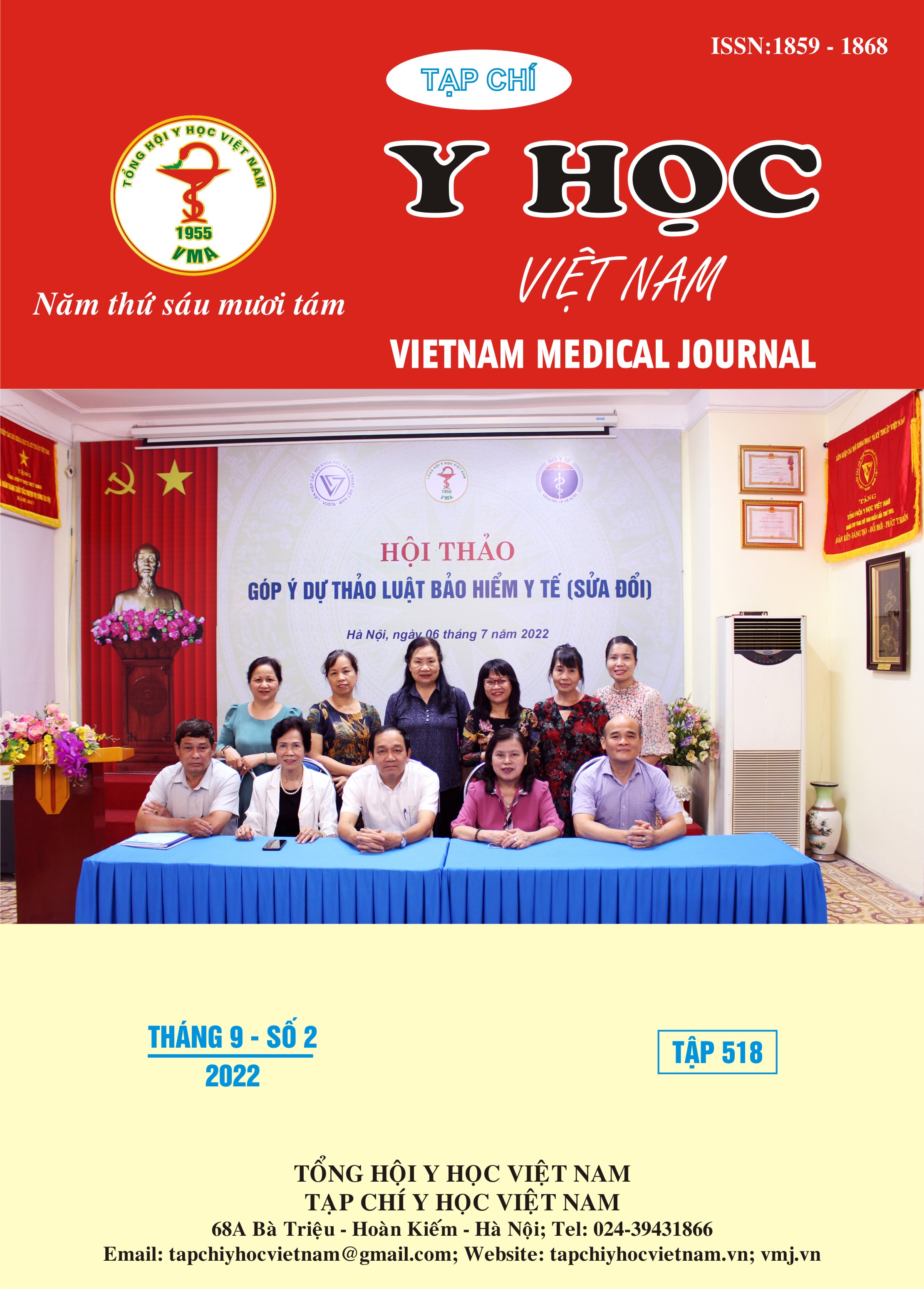VALIDATION OF A REAGENT-SAVING RT-QPCR PROCEDURE FOR SARS-COV-2 DIAGNOSIS
Main Article Content
Abstract
Introduction: Key challenges for the effective Covid-19 pandemic control comprise financial burden and care capacity. The test detecting virus RNA in the nasopharyngeal swab by RT-qPCR is pivotal for the pandemic management in Vietnam. However, this technique possessed potential difficµLties, including slow turn-around time, high cost and the shortage of reagent supply. This study aims at SARS-CoV-2 testing procedure transformation to improve its effectiveness. Materials and Method: Experimental study was carried out on the LightMix® Modular EAV RNA Extraction Control kit (Roche, Switzerland), TaqPath™ COVID‑19 CE‑IVD RT‑PCR kit (ThermoFisher, US) and RNA samples extracted from volunteer nasopharyngeal swab. Reaction conditions related to its volume & primer and probe concentration were examined at the level that is as low as 50% of the manufacturer recommendation. At each condition, PCR technical quality specifications, testing precision, sensitivity and specificity were validated. Results: The RT-qPCR reaction performed with 50% of primer and probe concentration, either at volume of 20 µL or 10 µL, met the technical quality specifications for a PCR assay. The assay showed a good CV (less than 11%) between runs within the day and along 3 days while its sensitivity and specificity are 100%. Conclusion: The RT-qPCR procedure diagnosing SARS-CoV-2 in nasopharyngeal swab, that is performed in a reagent-saving manner, fulfills assay validation criteria and is ready to transfer to medical units.
Article Details
Keywords
Covid-19 pandemic, SARS-CoV-2, RT-qPCR
References
2. Standardization, I.O.f., ISO 5725-1: 1994: accuracy (trueness and precision) of measurement methods and results-part 1: general principles and definitions. 1994: International Organization for Standardization.
3. Bohn, M.K., et al., IFCC interim guidelines on molecular testing of SARS-CoV-2 infection. 2020. 58(12): p. 1993-2000.
4. Biorad, Real-Time PCR Applications Guide. 2006.
5. Stephen Bustina, J.H., qPCR primer design revisitedBiomolecular Detection and Quantification. Biomolecular Detection and Quantification, 2017. 14: p. 19-28.
6. Mitchell, S., et al., Verification procedure for commercial tests with Emergency Use Authorization for the detection of SARS-CoV-2 RNA [Internet]. 2020 [cited 2020 Apr 8]. 2020.
7. (UK), D.o.H.S.C., Technical validation protocol for SARS - CoV - 2 nucleic acid detection. 2021.
8. Fisher, T., Precision in qPCR. 2021.


